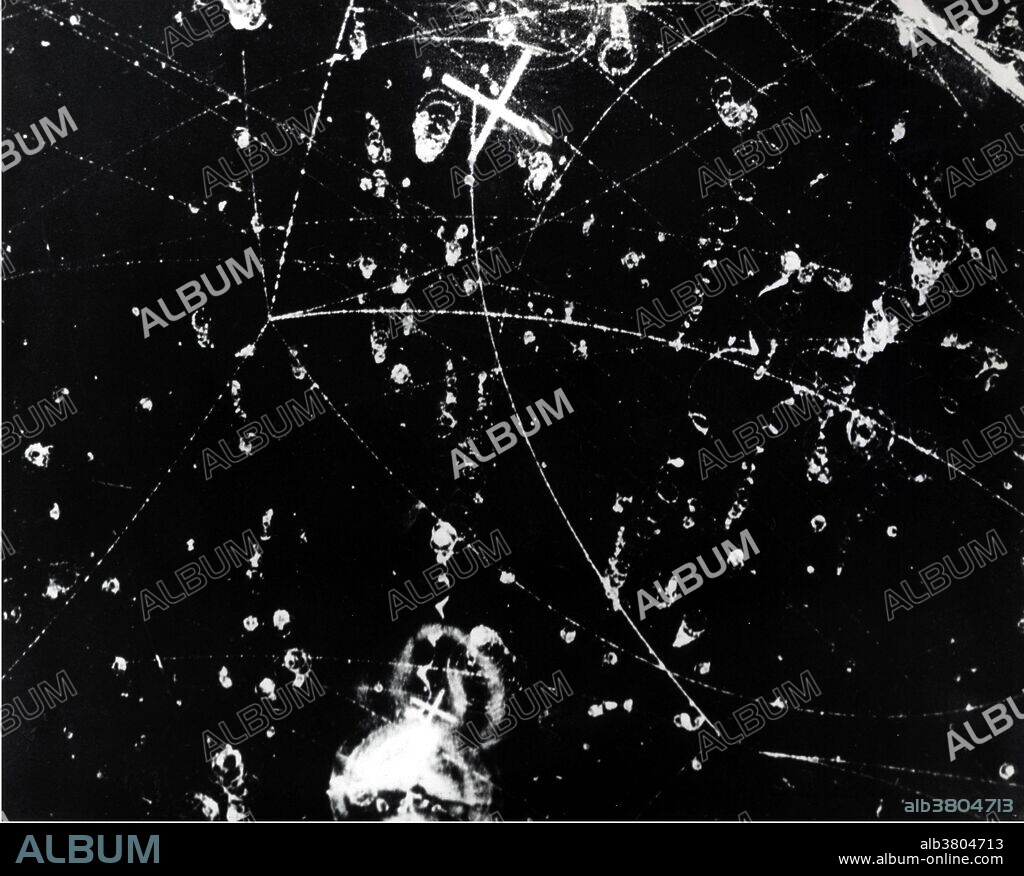alb3804713
Negative K Mesons, Bubble Chamber Event

|
Add to another lightbox |
|
Add to another lightbox |



Title:
Negative K Mesons, Bubble Chamber Event
Caption:
Nuclear particle tracks in the 10 inch bubble chamber mounted inside a superconducting magnet at Argonne show what happened to two negative K mesons that entered the bubble chamber from Argonne's ZGS (Zero Gradient Synchrotron), 1966. In particle physics, mesons are hadronic subatomic particles composed of one quark and one antiquark, bound together by the strong interaction. Mesons are not produced by radioactive decay, but appear in nature only as short-lived products of very high-energy interactions in matter, between particles made of quarks. A bubble chamber is a vessel filled with a superheated transparent liquid (most often liquid hydrogen) used to detect electrically charged particles moving through it. The ZGS was a 12 GeV weak-focusing proton synchrotron. It was the first synchrotron to accelerate spin polarized protons and the first to use H-minus injection.
Credit:
Album / DOE/Science Source
Releases:
Model: No - Property: No
Rights questions?
Rights questions?
Image size:
3900 x 3134 px | 35.0 MB
Print size:
33.0 x 26.5 cm | 13.0 x 10.4 in (300 dpi)
Keywords:
1960S • 1966 • 20 XX TWENTIETH CENTURY • 20TH CENTURY • 20TH • 60 60'S DECADE SIXTY YEARS • 60 60'S DECADE YEARS SIXTY SIXTIES • 60S • AMERICA • AMERICAN • BUBBLE CHAMBER EVENT • BUBBLE CHAMBER • BW • CHARGED PARTICLE • COMPOSITE PARTICLE • DEPARTMENT OF ENERGY • DISPLAY • DOE • HADRON • HADRONIC • HIGH-ENERGY • HISTORIC • HISTORICAL • HISTORY • LIQUID HYDROGEN BUBBLE CHAMBER • MESON • NEGATIVE K MESON • NUCLEAR PARTICLE TRACKS • PARTICLE ACCELERATOR • PARTICLE CHAMBER • PARTICLE DETECTION • PARTICLE DETECTOR • PARTICLE PHYSICS • PARTICLE TRACK • PARTICLE • PHYSICS • RESEARCH • SCIENCE • SIXTIES • SIXTIES, THE • SUB-ATOMIC PARTICLE • SUBATOMIC PARTICLE • SYNCHROTRON • TWENTIETH CENTURY • UNITES STATES • US • USA • WEAK-FOCUSING PROTON SYNCHROTRON • YEARS DECADE'S SIXTY SIXTIES 60 60 1960 • ZERO GRADIENT SYNCHROTRON
 Pinterest
Pinterest Twitter
Twitter Facebook
Facebook Copy link
Copy link Email
Email

